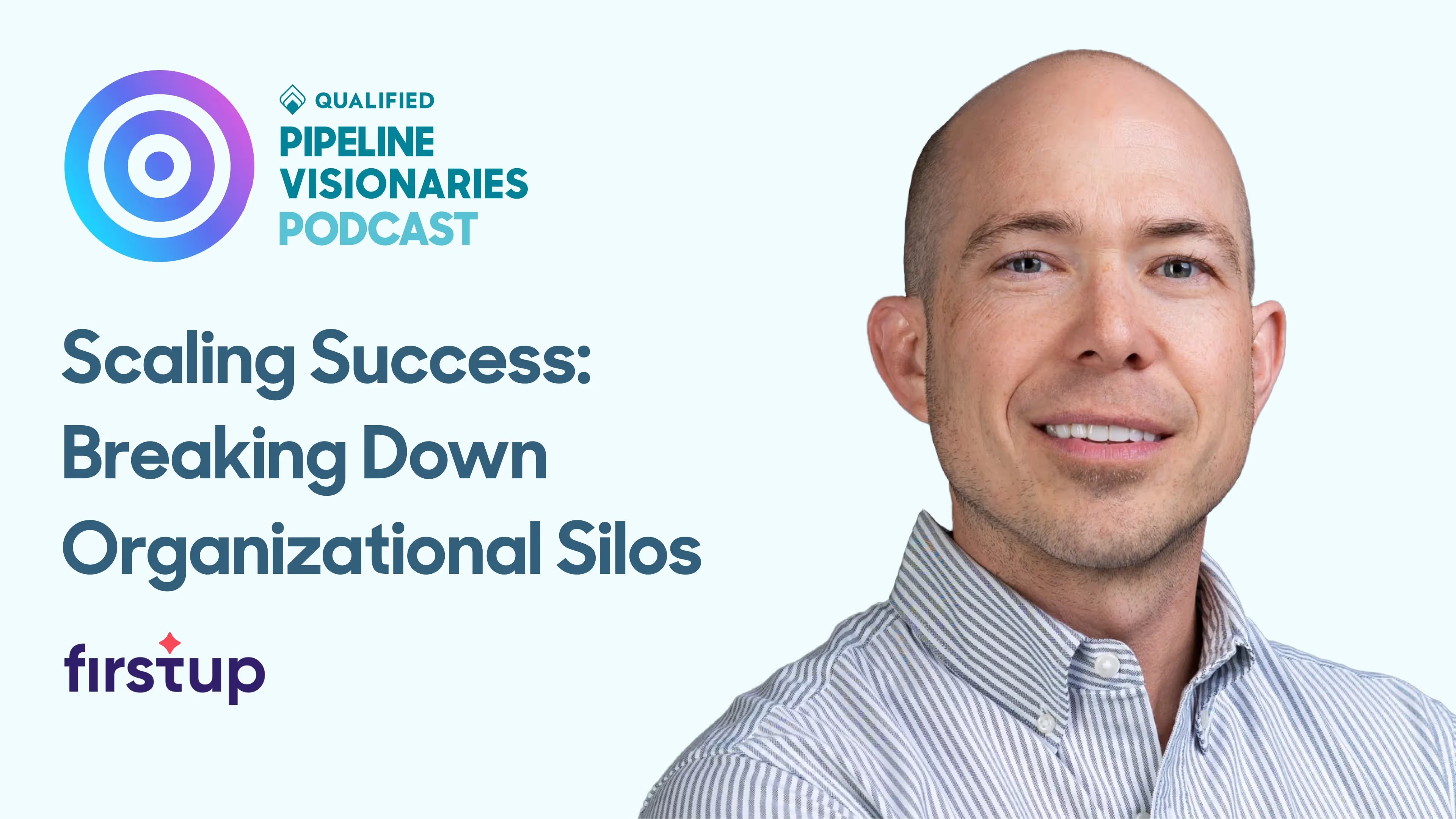Scaling Success: Breaking Down Organizational Silos
Andy Nester, CMO at Firstup, breaks down organizational silos and how that helps scale success for businesses.




Andy Nester, CMO at Firstup, breaks down organizational silos and how that helps scale success for businesses.

This episode features an interview with Andy Nester, CMO at Firstup, the world’s first intelligent communication platform.
In this episode, Andy gives us the scoop on why Firstup is the best in the business at delivering information to individual workers, how he and his team help large organizations personalize experiences for their workers, and his approach to in-depth problem solving for customers. Andy also shares about his work breaking down organizational silos and how that helps scale success for businesses.
Key Takeaways
Stay up to date with weekly drops of fresh B2B marketing and sales content.
Andy Nester, CMO at Firstup, breaks down organizational silos and how that helps scale success for businesses.


This episode features an interview with Andy Nester, CMO at Firstup, the world’s first intelligent communication platform.
In this episode, Andy gives us the scoop on why Firstup is the best in the business at delivering information to individual workers, how he and his team help large organizations personalize experiences for their workers, and his approach to in-depth problem solving for customers. Andy also shares about his work breaking down organizational silos and how that helps scale success for businesses.
Key Takeaways
Stay up to date with weekly drops of fresh B2B marketing and sales content.
Andy Nester, CMO at Firstup, breaks down organizational silos and how that helps scale success for businesses.


This episode features an interview with Andy Nester, CMO at Firstup, the world’s first intelligent communication platform.
In this episode, Andy gives us the scoop on why Firstup is the best in the business at delivering information to individual workers, how he and his team help large organizations personalize experiences for their workers, and his approach to in-depth problem solving for customers. Andy also shares about his work breaking down organizational silos and how that helps scale success for businesses.
Key Takeaways
Stay up to date with weekly drops of fresh B2B marketing and sales content.
Andy Nester, CMO at Firstup, breaks down organizational silos and how that helps scale success for businesses.



This episode features an interview with Andy Nester, CMO at Firstup, the world’s first intelligent communication platform.
In this episode, Andy gives us the scoop on why Firstup is the best in the business at delivering information to individual workers, how he and his team help large organizations personalize experiences for their workers, and his approach to in-depth problem solving for customers. Andy also shares about his work breaking down organizational silos and how that helps scale success for businesses.
Key Takeaways
Discover how we can help you convert more prospects into pipeline–right from your website.